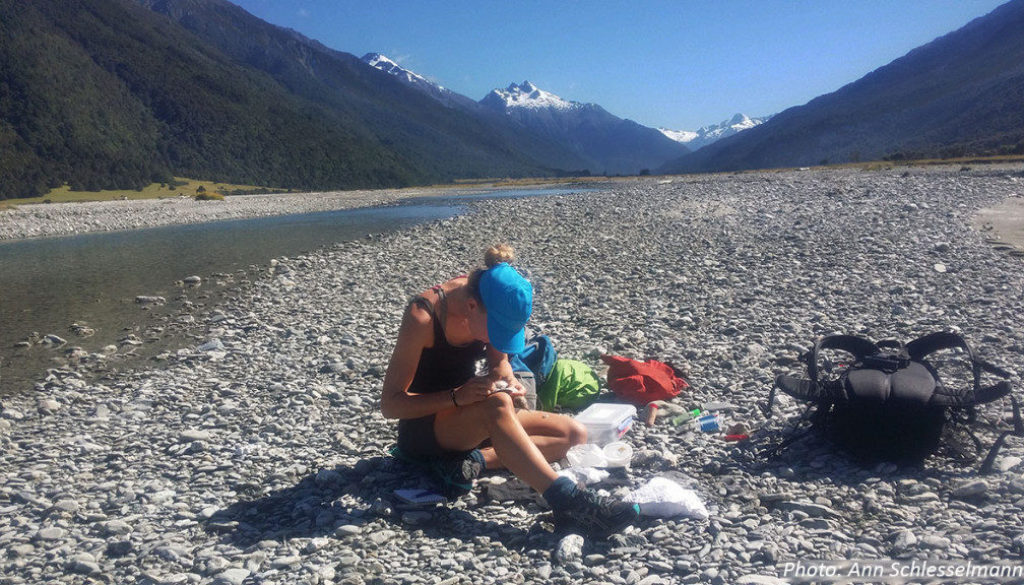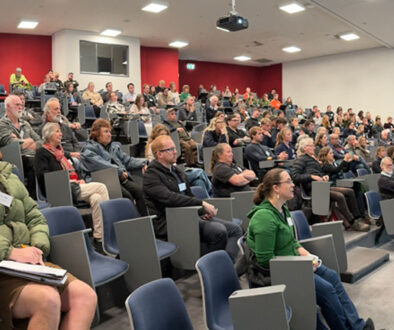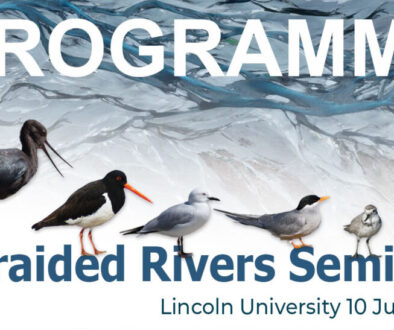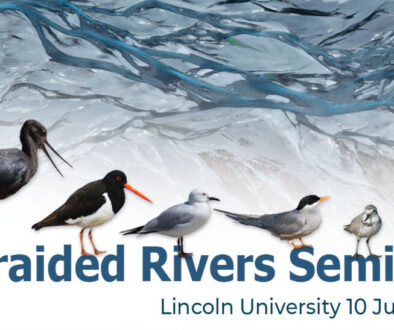Linking science with management
Ann-Kathrin Schlesselmann has been researching the genetics of black-fronted terns/tarapirohe for the past few years for her PhD thesis. Her findings represents a signficant breakthrough on several levels, and a clear signal that we have to start managing South Island rivers as interlinked rather than isolated systems. Ann-Kathrin summarises her findings below:
“In a nutshell, there are five key points that have come out of my research:
- Black-fronted terns have 1) high levels of genetic diversity; 2) low genetic differentiation between breeding colonies; 3) no genetic signature of isolation-by-distance; however, 4) a phenotypic signature of isolation-by-distance consisting of increasing body size with increasing latitude. Conservation management should consider the whole South Island as one conservation unit, consisting of a metapopulation of black-fronted terns. Conservation actions should be targeted on a catchment-scale throughout the South Island, so that natural colonisation and abandonment of breeding sites is possible.
- Recruitment failure is of primary concern leading to a small effective number of breeders (Nb~ 700 adults) and therefore a loss of genetic diversity at an increased rate. Management actions are urgent and should seek to improve breeding success, including hatching and fledging success as well as post-fledging survival. To ensure long-term survival, I suggest a minimum target for the effective number of breeders be set to Nb ~ 1,316 adults, which equates to an effective population size of Ne~ 1,000 adults (Frankham et al. 2014) based on the conversion of Waples et al. (2014).
- Impacts on nesting success of black-fronted terns differ between areas and outcome monitoring of management interventions is necessary to establish whether goals set are achieved. Further testing of combinations of habitat creation and predator control is necessary. A detailed write-up of clearing islands as a management tool in the lower Waitaki River can be found here.
- Monitoring demographic and spatial trends is crucial to assess the status of black-fronted terns. This includes braided river bird surveys or species-specific range surveys. These surveys should be paired with regular genetic monitoring (e.g. every 5 years) to assess the effective number of breeders. Sampling chicks in consecutive seasons throughout the whole breeding range and estimating the effective number of breeders will provide the most precise estimate of extinction risk in the short- and long-term. Together, braided river bird counts, range surveys, and genetic monitoring will enable ongoing assessment of progress towards conservation goals.
- The natal site, breeding site, and wintering site fidelity (migratory connectivity) is still not fully understood and research on the demographic connectivity between breeding sites throughout the whole annual cycle is needed. This could ensure that protection of the species throughout its whole range and life cycle can be achieved.”
In addition to her primary research, Ann-Kathrin also identified native southern black-backed gulls/karoro (Larus dominicanus) as primary predators of black-fronted tern nests, and nesting success was low, independent of island vegetation cover.
On a personal note, I would like to congratulate Ann-Kathrin on completing her PhD!




